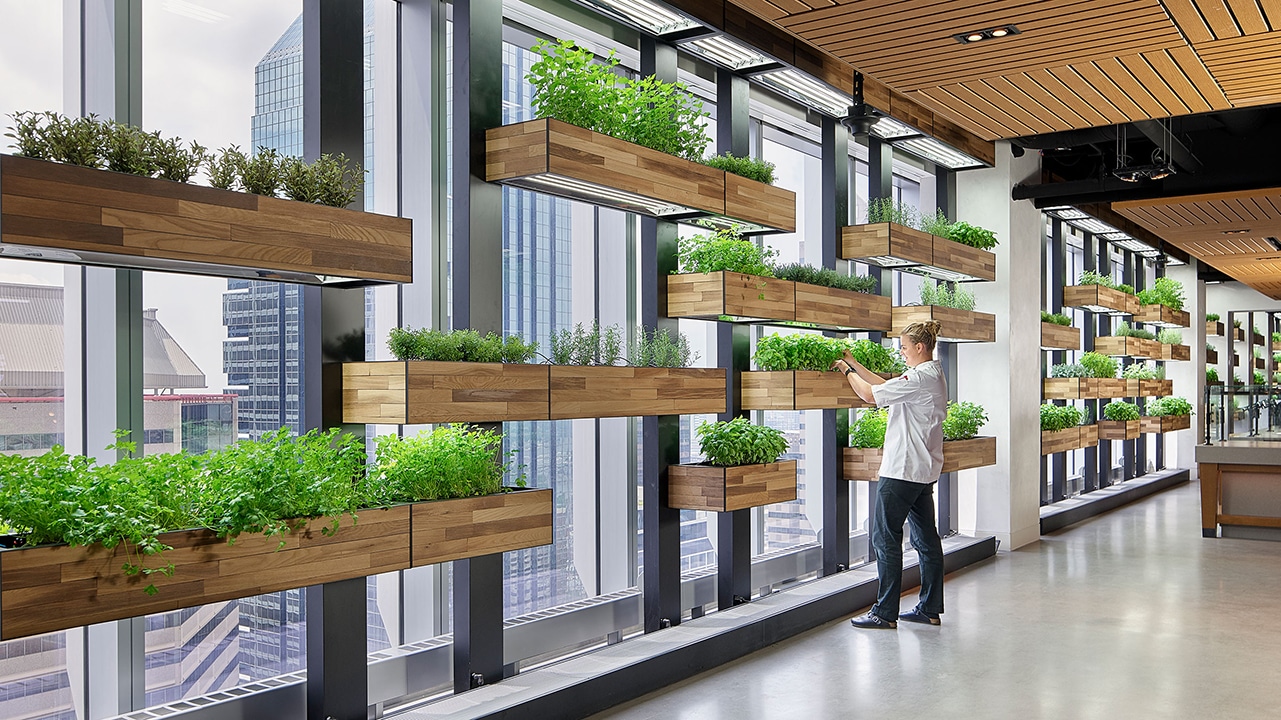![[Photo: Courtesy of Comcast]](https://gbdmagazine.com/wp-content/uploads/2019/02/comcast-tower-signage.jpg)
[Photo: Courtesy of Comcast]
PROJECT: Comcast Technology Center LOCATION: Philadelphia SIZE: 1.8 million square feet COMPLETION: 2018 LEAD ARCHITECT: Foster + Partners ENGINEERS: Thornton Tomasetti GENERAL CONTRACTOR: L.F. Driscoll PROJECT TEAM: Grant Brooker, Nigel Dancey, Dan Sibert, James Barnes, Russell Hales, Adam Davis, Annamaria Anderloni, Dominik Hauser, William Gordon
One way to grasp the immensity of the Comcast Technology Center, now towering in the Philadelphia skyline just west of its also-massive sister tower, Comcast Center, is to simply review the numbers: 60 floors; 1,121 feet tall; a budget of $1.5 billion; and under construction for more than three years. It now provides workspace to more than 4,000 Comcast employees, will be the site of a Four Seasons Hotel that will stretch across a dozen floors among the upper levels, and will welcome a new restaurant by acclaimed chef Jean-Georges Vongerichten. The most illustrative detail in terms of the tower’s sheer scope: It’s now among the 10 tallest buildings in the country; no American building outside of Chicago and New York City towers so high.
But the most extraordinary aspects of the building, from a green perspective, lie in the details. Biophilic design, incorporation of recycled materials, plenty of natural light, an innovative chilled beam system, exterior window louvers, and solar shades all work together to make the tower a sustainability success—and the tower, which was designed by leading green firm Foster + Partners and awarded LEED Platinum, had to embody sustainability.

[Photo: Courtesy of Comcast]
The Philadelphia Planning Code only affords developers maximum density and floor area ratios after a commitment has been made to the highest LEED targets. “The project could not have been developed in the form and size it is without this bonus,” says John S. Gattuso, senior vice president and regional director of Liberty Property Trust, which developed the property. “Unlike many projects that aspire to achieve a LEED Platinum rating, the developer and design team had to be absolutely certain the project would obtain this level of certification.”
Comcast has occupied its neighboring tower, Comcast Center—another massive, LEED-certified affair that, at 974 feet, rises nearly as high as its new sibling—since 2008, so it had been through a relatively similar building experience before, which means they had also put forth a sense of good architectural stewardship in the past. “Across Comcast NBCUniversal, we are focused on sustainable innovation, which extends to the buildings where we work,” says Karen Dougherty Buchholz, senior vice president of administration for Comcast. “This commitment is evident across our Comcast Center Campus, and the Comcast Technology Center is the latest example of how we are inspiring environmental responsibility.” Energy and water conservation along with waste reduction was “top of mind from the outset,” she says.
It’s a structure that has already added new shape and dimension to Philadelphia’s architectural legacy. And with the architects’ ability to deliver on the city’s onus on sustainability, it will likely loom large over tall-scale commercial urban architecture for some time to come.

[Photo: Courtesy of Comcast]
Weather-Responsive
Windows are decked out with daylight harvesting sensors that automatically adjust light and shading based on how illuminated a space is at a given moment, and loft areas throughout the tower also allow natural light to flood into the floor plates. Perhaps the most impressive way the tower holistically integrates the city’s climate comes via the chilled beam setup, which adjusts air temperature by passing hot and cold water through ceiling pipes. The system “allows for a more sustainable means to heat and cool the building by reducing the energy loads and creates a better working environment,” Hale says.
Down with TOD
The tower also encourages residents to make energy-efficient transportation choices. The plaza connects to public transit with a new, climate-controlled underground connection. Its proximity to rail transportation and a de-emphasis on parking (the site has only 54 parking spaces despite an estimated daily population of 4,000-plus) qualifies the tower as transit-oriented development. Developers took pains to gather feedback from neighborhood residents and guaranteed traffic to the new skyscraper wouldn’t result in parking spilling over into their community. They were sure to collaborate with residents on how such a large-scale project might “most successfully be integrated into the city’s pedestrian scaled street grid,” Gattuso says.

[Photo: Courtesy of Comcast]
Green on the Ground
Much of the Comcast Center’s innovation is found well below its towering mast. A ground-level winter garden draws the existing landscape of the plaza into the building, “creating a year-round evergreen public space for the city,” says Russell Hales, an architect and senior partner with Foster + Partners. “This shared civic resource allows people to experience greenery in the midst of an intensely urban environment,” he adds. The landscape gives way to a beautiful, biophilic public lobby, or “urban room,” as Hales calls it, noting its plaza, retail, and social aspects. Indoor trees, recycled end-grain wood floors, and slatted timber through which daylight pours complement one another to form what may be the jewel of the property.
